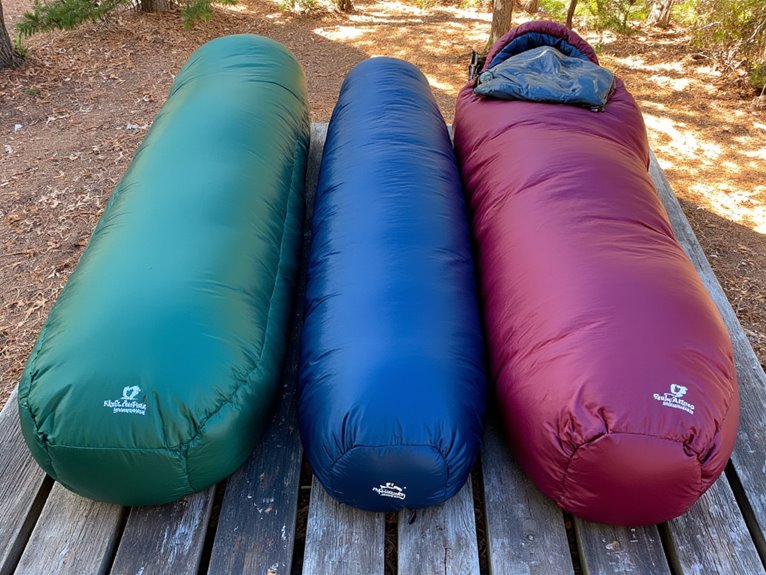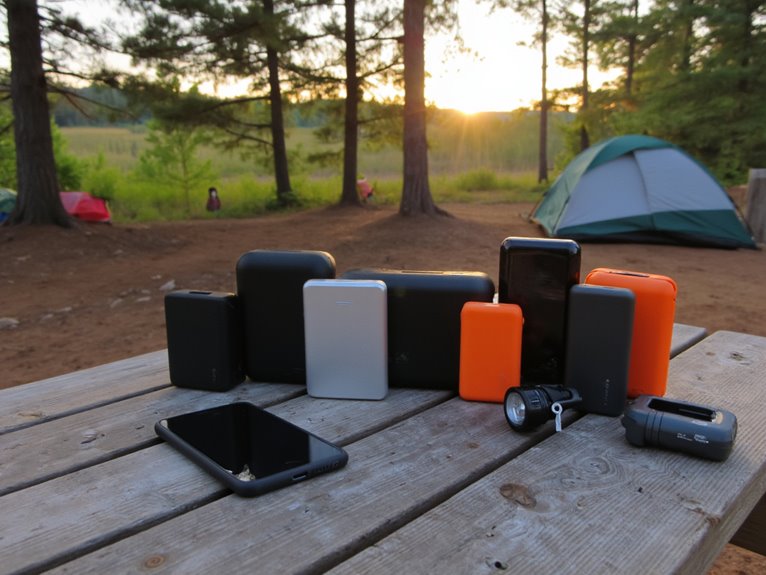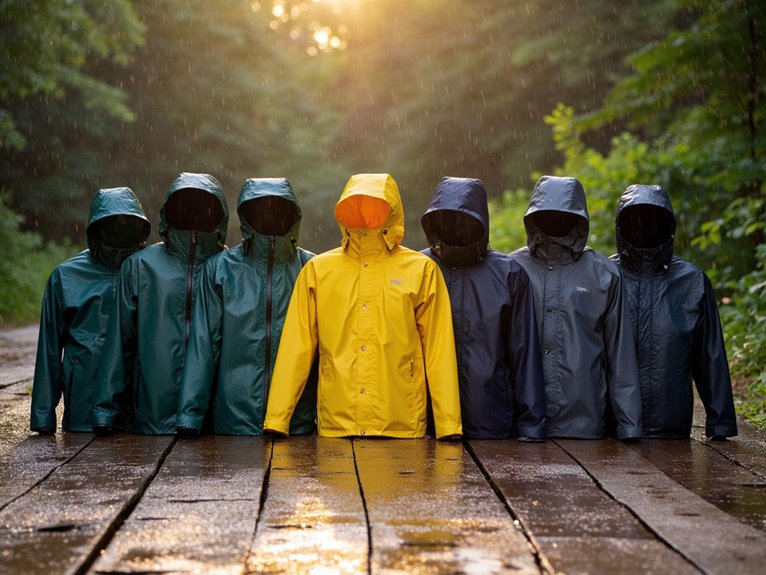Best Sleeping Bags for Different Body Types (Tall, Petite, Wide)
If you’re tall, choose sleeping bags extending up to 7 feet with at least 6 inches beyond your height measurement to prevent toe crowding. Petite users under 5’5″ need shorter lengths and narrower cuts for thermal efficiency, often requiring temperature ratings 5-10 degrees warmer than standard recommendations. Wide and broad-shouldered sleepers require minimum 64-inch shoulder girths with rectangular shapes and double zippers to avoid compression. Down insulation offers superior warmth-to-weight ratios, while synthetic maintains performance in moisture. Exploring specific brand recommendations reveals which models optimize comfort for your dimensions.
We are supported by our audience. When you purchase through links on our site, we may earn an affiliate commission, at no extra cost for you. Learn more. Last update on 25th November 2025 / Images from Amazon Product Advertising API.
Notable Insights
- Extra-long sleeping bags extending up to 7 feet accommodate tall users over 6’5″ with proper fitting requiring 6+ inches beyond height.
- Petite users under 5’5″ need shorter, narrower bags with women-specific designs to prevent excess air circulation and maintain thermal efficiency.
- Wide users require minimum 64-inch shoulder girth with rectangular shapes and double zippers for comfortable movement without compression.
- Down insulation offers superior warmth-to-weight ratios and compressibility, while synthetic insulation maintains warmth when moisture is present.
- Temperature ratings should be 5-10 degrees warmer for petite users due to smaller body mass affecting thermal performance.
Sleeping Bag Recommendations for Tall Users
When you’re over 6 feet tall, finding a sleeping bag that doesn’t leave your feet hanging out can feel like an impossible task. Extra-long sleeping bags extend up to 7 feet or more, specifically designed for users over 6’5″. Look for bags with at least 6 inches beyond your height measurement.
Customization options include contoured designs and rectangular shapes that prevent toe crowding.
Western Mountaineering and Feathered Friends offer custom long options, while Big Agnes Echo Park series provides wider girths for shoulder comfort.
Temperature ratings span summer to extreme cold conditions across all extended-length models.
Down and synthetic insulation maintains integrity at longer lengths. Features like dual zipper systems, built-in foot boxes, and polar neck baffles optimize performance for taller users. For tall backpackers prioritizing weight savings, consider ultralight models that compress to the size of a Nalgene bottle while still accommodating extended lengths.
Sleeping Bag Recommendations for Petite Users
Finding a sleeping bag that fits properly becomes even more critical if you’re under 5’5″, as standard-sized bags create excess space that undermines thermal efficiency.
Proper sleeping bag fit is crucial for petite hikers since oversized bags compromise warmth through excess air circulation.
Petite fitting requires shorter lengths and narrower cuts to prevent cold air circulation around your body.
Women’s-specific designs from Big Agnes and Western Mountaineering offer tailored dimensions for smaller frames. These bags typically measure 5’6″ or shorter with reduced shoulder and hip circumferences.
Down insulation options provide superior warmth-to-weight ratios compared to synthetic fills, making them ideal for your smaller pack capacity.
Look for high fill power ratings between 650-850 to maximize loft without bulk.
Temperature ratings should account for your smaller body mass, which may require selecting bags rated 5-10 degrees warmer than standard recommendations for best thermal performance.
For petite users prioritizing packability, target compression ratios under 12 inches to ensure your sleeping bag takes up minimal space in your already limited pack capacity.
Sleeping Bag Recommendations for Wide and Broad-Shouldered Users
Standard sleeping bags often feel like cramped cocoons for users with broad shoulders or larger frames, creating uncomfortable pressure points that disrupt sleep quality. You’ll need at least 64 inches of shoulder girth to sleep comfortably without compression. Wide bag features like double zippers and rectangular shapes provide essential room for movement.
| Model | Shoulder Girth | Hip Girth | Insulation Type | Weight |
|---|---|---|---|---|
| Big Agnes Echo Park 20 | 80″ | 74″ | Synthetic | 4.2 lbs |
| Western Mountaineering Badger | 66″ | 62″ | Down | 3.8 lbs |
| Feathered Friends Alpinlite | 64″ | 60″ | Down | 3.5 lbs |
| Mountain Hardwear Wide | 72″ | 68″ | Synthetic | 4.0 lbs |
| Big Agnes Wide Series | 70″ | 66″ | Down/Synthetic | 3.9 lbs |
Different insulation types affect performance—down compresses less but costs more, while synthetic fills maintain warmth in oversized spaces. Down sleeping bags weigh 20-30% less than synthetic bags at comparable temperature ratings, making them particularly beneficial for larger users who already carry heavier gear loads, though synthetic insulation maintains consistent warmth even if moisture enters the wider bag compartments.





